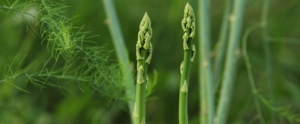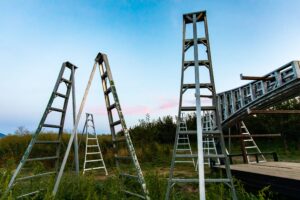
Pisctachios 2024.png
Of all of the nuts on supermarket shelves, pistachios are probably the most fun to eat. Merely sitting down with a packet of in-shell pistachios is enough to help you feel more relaxed — shelling and eating pistachios is a great activity to enjoy with friends, too! In California, we are fortunate enough to enjoy the ideal growing conditions for the pistachio nut tree in the San Joaquin Valley. Read on to learn more about pistachio growing and how to capitalize on this unique opportunity.
While fruit trees can tolerate a wider range of climate conditions, the pistachio nut tree needs a very specific set of climate conditions in order to thrive, with hot, dry summers and cold winters that don’t reach freezing point. This limits pistachio growing to four specific places in the United States:
- San Joaquin Valley of California
- The high New Mexican desert
- Far West Texas
- Southeastern Arizona
Given this fact, it is then unsurprising that at least 98% of pistachio production in the U.S. takes place in California, concentrated mostly in the Kern, Madera, Fresno, Kings, and Tulare counties.
How to Grow Pistachio Nut Trees
Growing pistachios takes a lot of time and effort, and you need to ensure that you have the correct climate and soil conditions before you begin to plant your trees. To ensure success with pistachios, your site needs to meet the following exact criteria:
- Hot, dry summer temperatures above 100°F
- Winter temperatures below 45°F but higher than 15°F
- Wind in spring and summer for pollination
- Light, well-draining sandy loam soil with a high concentration of calcium carbonate (CaCO3). Salty soil is fine for pistachios.
- Enough space to plant the trees 20 feet apart as they will grow to 20–30 feet in size
Starting Your Grove
There are two primary ways to start off a grove of pistachio nut trees. You can either germinate (raw unsalted) seeds, or purchase a grafted seedling to speed up the process. In your grove, you will need one male tree for every 10–15 female trees to pollinate your trees. This ratio can be achieved by germinating multiple seeds and hoping for a mix of male and female, or by inspecting each seedling purchased — the sex of the sapling will be the sex of the pistachio graft. Once the saplings are ready to plant, space them 20 feet apart (as mentioned above) with the male trees upwind from the female trees. After making sure the tree is straight and spreading out the roots into the soil, give each tree a very deep watering.
Ongoing Care
As each pistachio nut tree grows, it only needs a deep monthly watering until October — when the dormant period begins and irrigation should cease — and should be pruned two to three times a year to set the shape of the tree and ensure that light can get to the trunk.
Time to Harvest
It will generally take a good five years until you see pistachios growing on each pistachio nut tree, and you should begin to have a decent harvest around years seven to eight. Peak production begins around the years 15–20, so you will need a lot of patience and long-term planning to make your pistachio-growing endeavor a success.
Harvesting Pistachios
In late August to September when the hulls of your pistachios turn from greenish in color to pink or purple and the hull starts to separate from the inside of the shell, it’s time to harvest your pistachios. It’s important to do this quickly before mold develops inside the open fruit. For a small pistachio nut tree ranch, you can simply place a tarp on the ground and tap the branches with a long pole — the nuts will fall by themselves. For a large planting of pistachios, a mechanical agitator with a collection tray will do the job for you.
Postharvest and Sale
After pistachio growing and harvesting, you can either eat or sell the pistachios immediately or peel off the hulls and dry the nuts. You can then roast and season the pistachios and make nut butters and desserts or package the roasted nuts for shipping and sale.
Boost Your Yields with Fruit Growers Supply
Are you interested in starting a pistachio nut tree grove? We can help you get started with specialist pruning tools, solar irrigation, postharvest treatments, and more. Contact our friendly customer service team to find out how we can help to increase your yields.
Related
Source link
2024-10-28 11:34:28
Karl Hoffman is a distinguished agriculturalist with over four decades of experience in sustainable farming practices. He holds a Ph.D. in Agronomy from Cornell University and has made significant contributions as a professor at Iowa State University. Hoffman’s groundbreaking research on integrated pest management and soil health has revolutionized modern agriculture. As a respected farm journalist, his column “Field Notes with Karl Hoffman” and his blog “The Modern Farmer” provide insightful, practical advice to a global audience. Hoffman’s work with the USDA and the United Nations FAO has enhanced food security worldwide. His awards include the USDA’s Distinguished Service Award and the World Food Prize, reflecting his profound impact on agriculture and sustainability.



The internet makes it easier than ever to expand our horizons and pursue new passions. ??